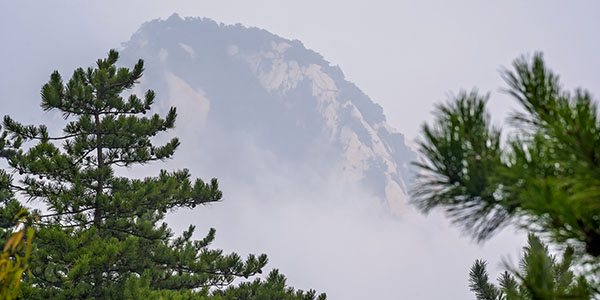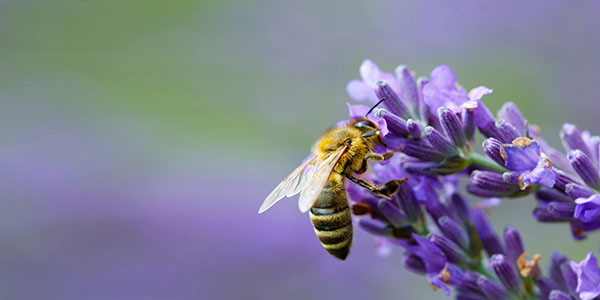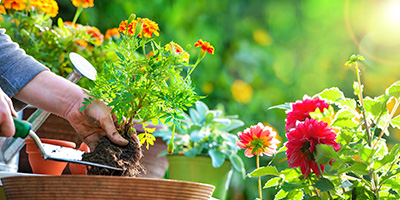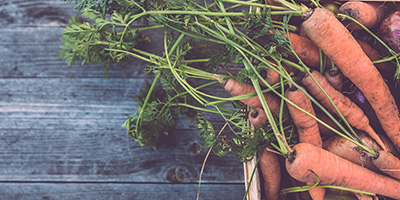50 Ways to Conserve Natural Resources at Home

How to Save Natural Resources in Your Home
Celebrated every year on July 28th, World Nature Conservation Day is a reminder that a healthy environment can only be maintained if we learn to use our natural resources sustainably. By consuming less and conserving more, we can leave behind a healthy planet for future generations. Get inspired to make the world a better place with these environmentally friendly habits in honor of World Nature Conservation Day.
Best Ways to Conserve Water at Home
According to Save the Water, the average American uses 2,000 gallons of water every day, while the average family in Africa uses only 5 gallons of water each day. Taking these steps to conserve water can make a big difference.
- Only wash full loads of laundry.
- Fill a bucket while showering and use it to water plants.
- Run the dishwasher only when full.
- Turn off the faucet while brushing your teeth.
- Create a lawn watering schedule using a watering calculator.
- Harvest rainwater.
- Install water-efficient appliances and showerheads.
Looking for more ways to save water? Check out our Water Conservation Guide!

How to Cut Packaging and Food Waste at Home
From production to distribution, food eats up a lot of natural resources before it even finds its way to your grocery cart. And once eaten, the leftover plastic wrappers, cardboard boxes and uneaten scraps find a more permanent home in the landfill, emitting greenhouse gasses as they slowly decompose. Here’s a few tips for eco-friendly eating.
- Plan your weekly meals to waste less food.
- Only buy food on your shopping list.
- Start a compost pile.
- Cut down on processed foods in your cupboards.
- Pack your lunch with reusable containers.
- Skip fast food.
- Reuse water bottles and plastic bags.
- Use less straws, plastic silverware and paper plates.
- Start a community garden.

“We believe that our biggest environmental challenges can be broken down into smaller, more manageable parts. Skipping the straw is an easy task that most people can do to make a difference. Plus, it can spark other positive changes in our everyday lifestyle choices.”
Danielle Portnoy, Heal the Bay
How to Save Fuel
There’s no doubt that the emissions from traffic pollute the air. Switching up your driving habits can make a bigger environmental impact than you think. Not only will you spend less money on gas, but you will also significantly reduce your carbon footprint.
- Turn your engine off when idling longer than 15 minutes.
- Use ride-sharing services like Uber or Lyft.
- Take public transportation like buses or trains.
- Carpool to work.
- Consider buying an electric vehicle if your budget allows.
- Walk or ride your bike.
- Pump regular fuel, unless your vehicle requires premium.
- Avoid idling in fast-food lanes.
- Keep tires fully inflated for better fuel economy.
- Only use A/C in your car when necessary.
How to Use Less Paper
It’s crammed into your mail box, piled on your desk and sometimes recycled. But more often than not, unread mail, old phonebooks and other paper products sit in landfills, while more and more forests are cut down each year to produce even more products. Here’s how you can limit your paper use.
- Switch to online bill pay.
- Opt out of junk mail subscriptions.
- Think before you print.
- Recycle according to your local guidelines.
- Subscribe to digital magazine subscriptions.
- Donate boxes from online shopping or after moving.

How to Use Less Electricity at Home
The byproducts of power plants can have a negative impact on the environment and human health. Limiting your family’s electricity use can make a big difference, while also saving you money. Here’s a few ways you can conserve electricity at home.
- Unplug chargers and appliances when not in use.
- Open your windows instead of running the A/C.
- Close shades during sunny hours.
- Turn lights off before leaving your home.
- Install timers or motion detectors on indoor and outdoor lighting.
- Replace your lightbulbs with LEDs.
Other Ways You Can Celebrate World Conservation Day

“With increased pressure on our habitats comes increased stress on wildlife. Yet there are things each of us can do to help. Songbirds and native pollinators, for example, would greatly benefit from an increased use of native plants and a reduction in the use of chemical fertilizers, pesticides, and herbicides.”
Jeanne Gural, Executive Director, Cedar Run Animal Refuge
- Plant flowers for birds, bees and other pollinators.
- Eat less meat or find meat from local farms.
- Plant a garden to harvest your own food.
- Plant and maintain trees, and harvest their fruit.
- Buy or sell furniture, clothing and household items using LetGo, Craigslist or your local thrift shop.
- Purchase products made in the USA.
- Measure your detergent for laundry. Don’t overload.
- Shop yard sales, garage sales and estate sales instead of large department stores.
- Use sustainably sourced beauty products.
- Buy ethically grown/harvested coffee and chocolate.
- Donate old appliances, tools or equipment when replacing, if in good condition.
- Join a local nonprofit focused on sustainability.
Looking for ways to create a greener community? Check out our guide on Planning a River Cleanup!




